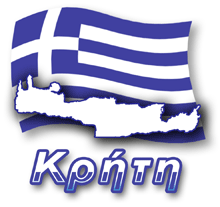
The Archeological Museum in Eleftherna ( Ἐλεύθερνα ) is still a 'fresh' attraction, which we attach to our map of places to visit in Crete. It is worth knowing that even before the opening, it was one of the most anticipated and unique investments carried out over the past few years. Its inauguration in June 2016 has become a big cultural event not only in Crete, but also in Greece. Not only the President of Greece took part in the event, but also leading personalities from the world of politics, science and business.
This museum is located on the sidelines of the modern village of Eleftherna about 25 km southeast of Rethymno. It was created to present the results of thirty years of excavations carried out in the ancient city of Eleftherna and its local necropolis Orthi Petra. The discoveries made shed much light on the long period of the city's history from 3000 BC to the 14th century AD
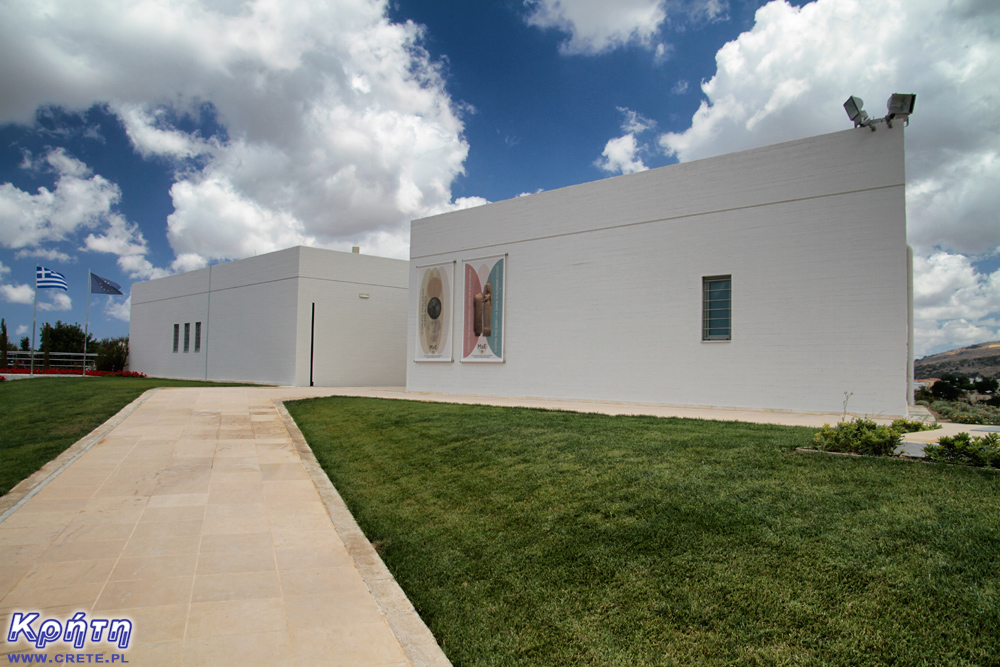
The building of the museum was from the beginning one of the most important projects carried out in the Rethymnon prefecture. Although the work schedule originally envisaged implementation within 400 days, delays occurred which caused a significant shift in the opening date of the museum. It is also worth noting that the construction of the facility carried out by the Cretan University and the Ministry of Culture benefited from support from the European Union. Private sponsors also participated in financing this investment, including the Onassis Foundation, Alpha Bank, Grecotel and numerous individual donors.
What determines the uniqueness of this museum is primarily the findings from beyond the period of Minoan culture, discovered in the ancient Eleftherna, which is one of the most important cities of ancient Crete. This means that visitors to this place can look and learn about the remains from the dawn of the Greek civilization described by Homer.
This is what the workers of the museum and the Greek Ministry of Culture say is unique on a global scale. Until now, the collections of Cretan archaeological museums were associated mainly with the later Minoan era and the period of Roman rule.
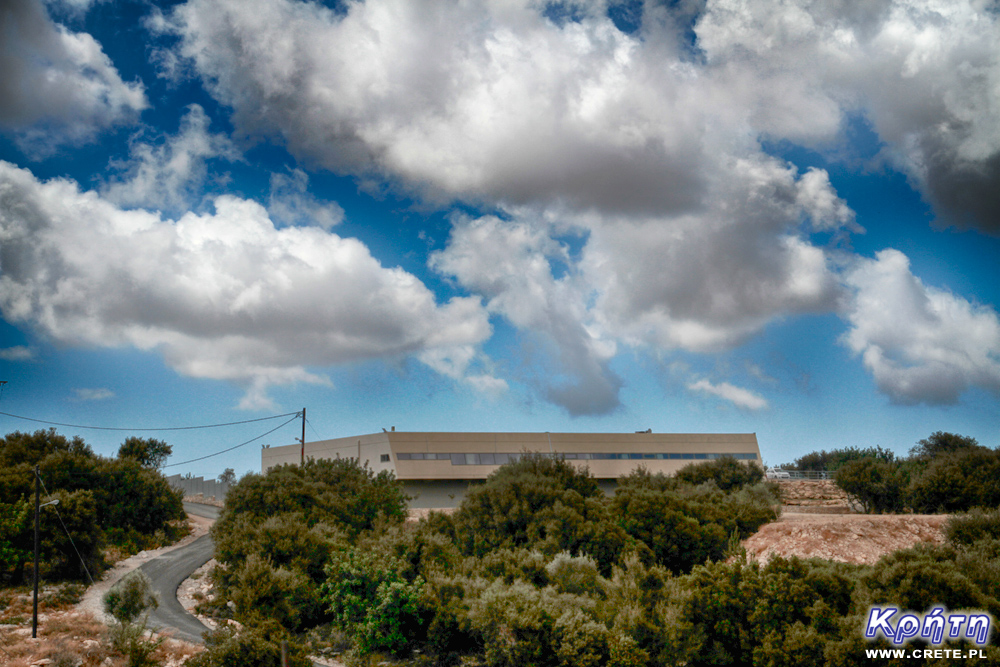
The museum building itself is quite unusual for Crete. A flat raw concrete block with a total area of 1800 sq.m. it was built in the middle of a three-area area. This building clearly contrasts with the traditional buildings of nearby modern Eleftherna. Modern interiors and an interesting way of presenting collections often shown in their "natural" surroundings emphasize even more the distance that separates the present with ancient objects found in the surrounding land. It also seems that the museum has also found a recipe for the excavation enthusiasts to look more systematically here. This solution is to be renewing the presented collections collection every few years, so that people who have already visited this museum, after a few years could come back here and see completely new items.
The space of the museum has been divided into three rooms, in which everyday objects and works of art from ancient Elefhterna are presented. It is foreseen that the exhibition halls will be able to accommodate at least four groups of visitors, 50 people each. We are sure that, over time, organized tourist groups will come here definitely more often. Especially, that there are many other well-known and interesting places nearby. At the time when we came to this museum, which is only a month after its opening, we met mainly individuals here.
In the project of this investment, it is also important that in the southern wing of the building there is a center and a research center, a library as well as offices and an archives of excavations. These facilities will be available to Greek and foreign scientists and students from many fields of science from Europe, the USA, Asia and Australia. Interestingly, there were also warehouses and workshops equipped with the latest technologies necessary to carry out the maintenance of found objects in the basement of the museum. This solution is particularly important for archaeologists who are still working on nearby excavations.
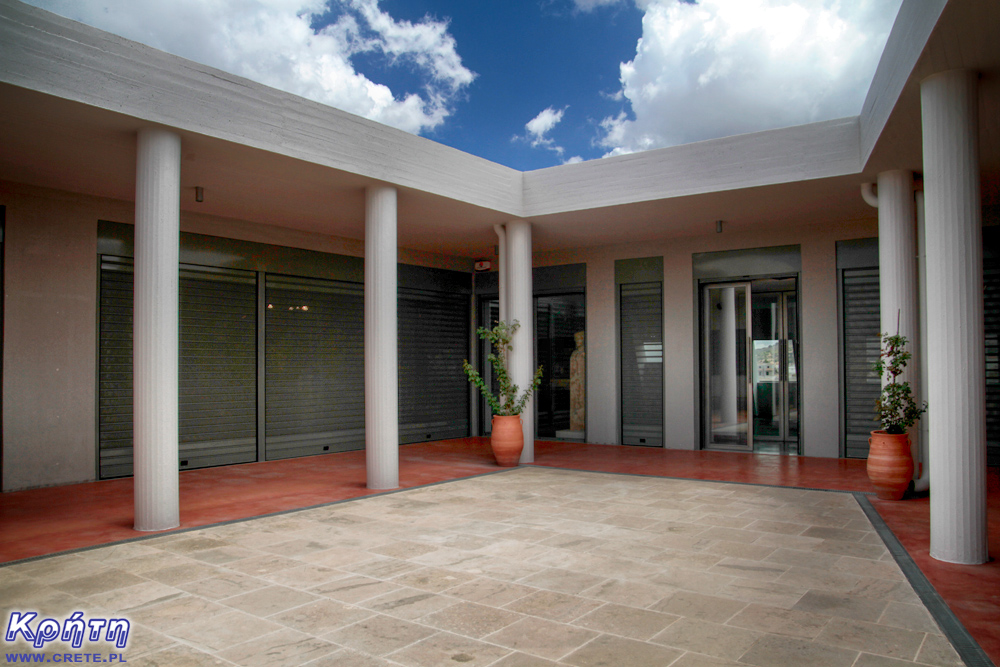
The objects collected here bring closer the life in ancient Elefthernieboth religious, political, social and private. You can see here everyday tools, weapons, jewelry, vases, sculptures and figurines, fragments of architectural constructions and coins from different periods.
This room is devoted above all to the religious life of the inhabitants of Eleftherna from the beginning of the Iron Age to Christian times.
There is also one of the most important finds in this room - a female figure of Eleutherna Kore compared to the famous sculpture of the Lady of Auxerre currently in the Louvre museum. As shown by the research, both figurines were made of the same limestone from a nearby quarry (99.73% affinity). Researchers agree that the Paris sculpture comes from Crete. For that reason, it's worth taking a closer look at Eleutherna Kore . In addition, the screen next to the artifact presents a film showing the history of this find from its discovery to the identification of origin and connection with the Lady of Auxerre .
In this room are concentrated finds from the local ancient necropolis Orthi Petra. Thanks to these discoveries, archaeologists could, among other things, confirm the funerary customs of the ancient city described, among others, by Homer in Illiad.
Unfortunately, we can not show you a single photo of the museum halls. For reasons that little understandable to us, all visitors to this place were forced to leave cameras and cameras in the ticket offices. Perhaps the museum will resign from the prohibition of photography for some time. Some photographs of the exhibits can be found on the museum's website: www.mae.com.gr
In July 2016 when we were in this museum, a very interesting archaeological trail led by the ancient necropolis of Orthi Petra was not yet available for tourists, from which the finds presented in Hall C. came. The next year was also closed on the site of ancient Eleftherna. So we still have the motivation to return to Eleftherna for some time :)
If the museum intrigued you and you would like to visit it in the future, it is worth combining the trip here with several other interesting places located within a few kilometers: Moni Arkadiou monastery, potter's village Margarites, or Melidoni cave.
There is a car park at the back of the museum building where you can leave your car.
In July 2016, admission to the museum was free. We do not know if it still is.
↤ click the appropriate part of the island to change the bottom map
Knossos is one of the flagship monuments visited by tourists, it is also the most popular place where organized trips go.
Heraklion (Iraklion) is the largest city of Crete. With almost 140,000 inhabitants, it is the fourth largest city in Greece.
Dozens of craft workshops located in this small mountain village make Margarites one of the four main centers where traditional Cretan ceramics are made.
International airport. Nikos Kazantzakis in Heraklion is currently the largest airport in Crete.
Heraklion (Iraklion) is the largest city of Crete. With almost 140,000 inhabitants, it is the fourth largest Greek city.
The date of the foundation of Moni Arkadiou (Arkadi) is not exactly known. According to tradition, the name of this church refers to the name of the Emperor Arkadiusz, who supposedly was to be its founder.
The date of the foundation of Moni Arkadiou (Arkadi) is not exactly known. According to tradition, the name of this church refers to the name of the Emperor Arkadiusz, who supposedly was to be its founder.
Rethymnon with around 40,000 inhabitants are the third largest city of Crete. This place was populated already in the Minoan period. Historically, the city was an important commercial center.
Thrapsano is a small town inhabited by slightly over 2,500 people, the vast majority of which until recently maintained their activity as a potter.
Skinaria is a small beach located along a small bay, whose outlet on both sides ends with a rocky coast. It is still a little-known place overlooked by mass tourism
Skinaria is a small beach located along a small bay, whose outlet on both sides ends with a rocky coast. It is still a little-known place overlooked by mass tourism
According to Greek mythology, Zeus hid (and perhaps even gave birth) in the Ida cave. This myth is the greatest asset of this cave, which is not as interesting and beautiful as the Dikte cave.
Tripiti is a small beach covered with a mixture of gray sand, gravel and stones. Despite the fact that the beach is unorganized and has a semi-natural appearance, one small tavern works here.
Tripiti is a small beach covered with a mixture of gray sand, gravel and stones. Despite the fact that the beach is unorganized and has a semi-natural appearance, one small tavern works here.
Tripiti is a small beach covered with a mixture of gray sand, gravel and stones. Despite the fact that the beach is unorganized and has a semi-natural appearance, one small tavern works here.
Plakias is a perfect place for people who like to spend time hiking. In the area of the town and the surrounding area, there are several hiking trails that lead to interesting beaches.
Currently, the lower monastery is still not open to the public and is not used by the monks. The buildings of the upper monastery have undergone partial renovation and are the main seat of the Preveli monastery.
Currently, the lower monastery is still not open to the public and is not used by the monks. The buildings of the upper monastery have undergone partial renovation and are the main seat of the Preveli monastery.
Currently, the lower monastery is still not open to the public and is not used by the monks. The buildings of the upper monastery have undergone partial renovation and are the main seat of the Preveli monastery.
The Kourtaliotiko Gorge, also known as the Asomatos Gorge, is perhaps one of the most spectacular natural attractions available in the central part of Crete.
Agia Triada is a small Minoan archaeological site in the south of Crete, located near Timpaki, located on the western slope of the hill about 40 meters above sea level.
Około 60 kilometrów na południowy zachód od stolicy Krety - Heraklionu znajdują się ruiny drugiego co do wielkości starożytnego pałacu - Fajstos.
Currently, Melidoni Cave (originally called Gerontospilios) is associated mainly with the tragic events that took place here in 1824.
This fortress is a perfect example of Crete's multiculturalism. Located today in Greek hands, it was built by the Venetians, but is called a name taken from the Turkish language.
It is one of the most important and largest museums in Greece and one of the most important in Europe.
Tylissos is one of the few places in Crete that has kept its name since ancient times.
Plaża w Damnoni jest położona po sąsiedzku z Plakias - popularną turystyczną miejscowością
Agios Pavlos is a small town located on the southern coast of Crete near Saktouria.
Triopetra is located at the foot of the Siderotas mountain about 52 km south of Rethymno.
gia Galini (Αγία Γαλήνη) jest jednym z najpopularniejszych nadmorskich kurortów na południowym wybrzeżu Krety.
The observatory is located at the top of the Skinakas mountain at an altitude of 1750 m. The idea for its construction was born in 1984.
The Late-Romanesque cemetery in Armeni is located on the outskirts of this town, located less than 10 km south of the center of Rethymno.
The museum presents the dramatic history of Crete written over the last several hundred years.
The modern settlement known as Argyroupolis was built on the site of the ancient city of Lappa (also called Lambi)
Lentas is a good idea for those who want to get away from villages steeped in industrial tourism.
This ancient quarry, consisting of two parts by modern times, is called Λαβυρινθάκι and Λαβύρινθος.
If anyone of you is looking for a good restaurant near Matala and Kalamaki, then we would like to recommend estiório Chrisopigi.
Psiloritis (Timios Stavros - Holy Cross) is the top of the highest mountain of Crete, rising to 2456 m above sea level.
Rouvas Gorge is one of the most interesting places in this part of Crete. The interesting trail leads in a perfect way to the changing appearance of this gorge.
Matala is one of the most popular towns not only of the southern coast but also of the whole of Crete. In the 1960s and 1970s, this small fishing village was a mecca for hippies.
The Odigitrias Monastery is one of the most famous monasteries of southern Crete. Unfortunately, in terms of popularity, he is far from other Cretan monasteries.
Kali Limenes (meaning Dobre Porty or Piękny Przystanie) is a coastal town located in the Asterousia Mountains on the southern coast of Crete.
In addition to the famous grand palaces on the island in the Minoan period, a number of smaller residences were created. One of the most important examples is the Vathipetro discovered about 5 km north of Archanes, on the southeastern slope of Mount Juchtas in the central part of Crete.
When traveling around Crete, it is not difficult to pay attention to the fact that most of the beaches there are relatively small and short. For this reason, people who are used to our national Baltic standards, where the sandy coast stretches for kilometers, may experience a special disappointment. However, fortunately, nothing is lost, because Crete in its rich arsenal of various beaches can boast of those that allow for long walks along the coast. One of them, our favorite is the Kommos beach located in the south of the central part of the island.
Although there are countless caves in Crete, only a few can be visited. Sfendoni is the largest cave open to the public. content comes from: http://www.crete.pl www.CRETE.pl
The old Venetian port and the lighthouse are one of the most recognizable elements of Rethymno.
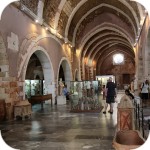
In Crete, in each of the big cities there are archaeological museums where you can see artifacts excavated on the island. The largest and richest in the collection is located in the capital of the island of Heraklion. It is worth visiting them especially that a long-term refurbishment has recently been completed and you can finally appreciate the vastness of the collected items. Nevertheless, other museums are also worth visiting, even though their resources are not as impressive as those in Heraklion. This particularly applies to the Archaeological Museum of Chania.
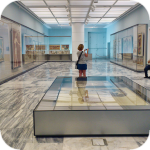
The Archaeological Museum of Heraklion is one of the most important and largest museums in Greece and one of the most important in Europe. The permanent exhibition of the museum contains unique works of art and Cretan history from excavations from the central and eastern parts of the island. It covers all periods of Crete's history and prehistory from the 5,500 years range from the Neolithic to the Roman times.
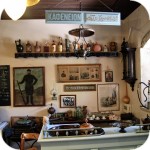
If you would like to see how the everyday life of the inhabitants of Crete used to be, then you must visit the Museum of History and Folk Art in the center of the Old Town of Rethymno. The exposition gathered in several exhibition halls, unlike those presented in archaeological museums, focuses in most cases on objects from a relatively close past. Usually, these are things that were in everyday surroundings and were used by the Cretans living at the turn of the eighteenth and nineteenth centuries.
Komentarze
komentarz z
Ale warto sobie też pochodzić po Elefternie, znaczy - wykopkach i okolicy, nie tylko muzeum.
komentarz z
Jasne, jasna, jak najbardziej. Niestety w momencie jak byliśmy w muzeum, podobnie zresztą ja i w poprzednich latach od czasu kiedy tu jeździmy, wszystkie wykopaliska były zamknięte. Owszem można je było oglądać, ale z daleka i zza siatki.
komentarz z
Siatka ma (09/2016) nieoficjalną dziurę :)
komentarz z
Super! Kiedy byłam tam w 2006 roku, były wyłącznie wykopki, tez ogrodzone siatką. A wokół pustka i cisza, jak na bezludnej wyspie...
komentarz z
Nasze pierwsze odwiedziny w Elefthernie przypadły na 2008 rok. Też był płot zwieńczony drutem kolczastym. Tu i ówdzie przyczepione były tabliczki o kategorycznym zakazie wstępu oraz informacje o tym, że teren jest monitorowany. Widać, że w kwestii wykopalisk ciągle jest coś robione. Jednak ciężko mówić o jakimś wielkim progresie na przestrzeni tych kilku lat. Kilka lat temu przy poszczególnych wykopaliskach wybudowane zostały punkty kasowe. Niestety nigdy ich nie uruchomiono a w zeszłym roku zauważyliśmy, że w zasadzie już w tej chwili nadają się one do remontu ... szkoda.
Już są bilety
W czerwcu 2017 r. już musieliśmy zapłacić:
dorosły - 4 euro, emeryt (>65 lat) - 2 euro, dzieci - za darmo (też dostają bilet).
Pozdrawiam
Wypełnij poniższy formularz aby dodać komentarz
lub kliknij w poniższy link aby skorzystać z możliwosci komentowania przez facebooka:
https://www.facebook.com/crete.poland/posts/10154356282757551